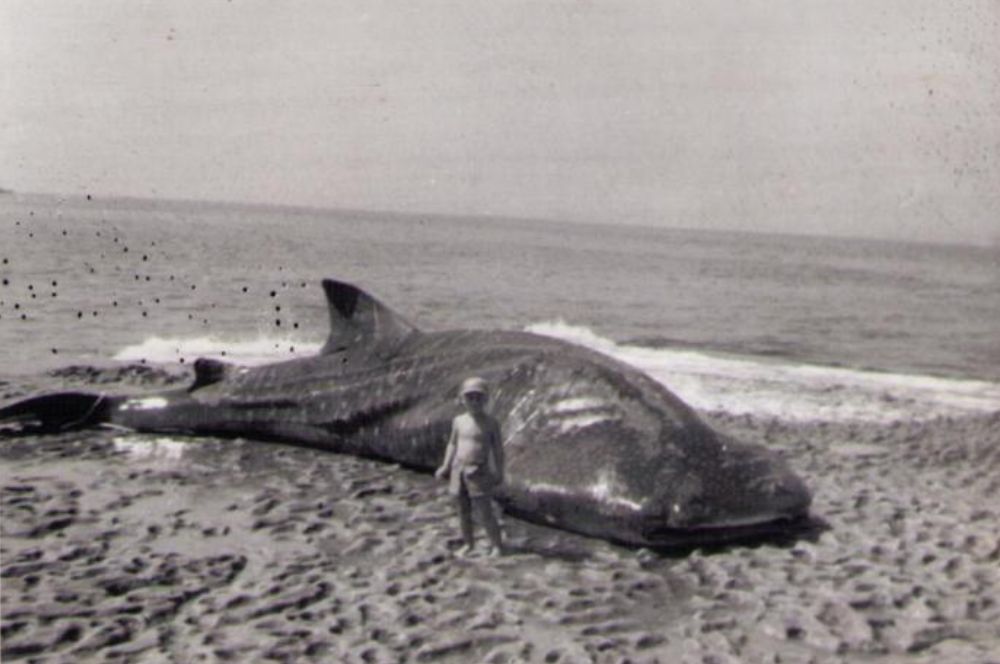You have 0 product(s) in your cart.
Abyss Scuba Diving
Funny Shark Facts You Never Knew
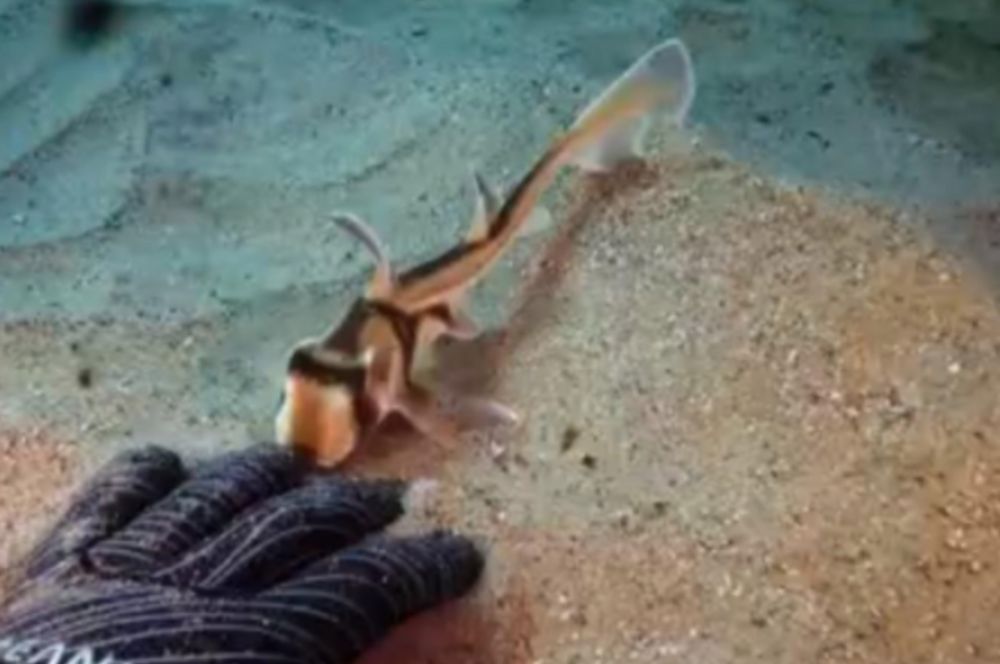
Jawsome Laughs: Funny Shark Facts You Never Knew!
Sure, sharks are often portrayed as terrifying creatures in the movies. But did you know that these animals can also be quite funny? Here are some interesting facts about sharks that will make you chuckle.
Sharks have gotten a bad reputation as mindless killers due to their portrayal in movies, but in reality shark species are often quite harmless. The biggest shark of all, the whale shark, mainly feeds on plankton, which makes it an entirely harmless species. In addition, most shark species found in north-American waters such as the sand tiger shark and the bonnethead shark rarely ever attack humans and tend to shy from contact with people. It is important to remember that sharks are just animals trying to make a living in their environment and should be respected accordingly.
Here are some fun Facts About sharks;
Sharks have been around for a long time!
The earliest known sharks surfaced in the oceans a staggering 400 million years ago - an era before dinosaurs! The Cladoselache, which lived during the Devonian period approximately 370 million years ago, is believed to be one of their primary ancestors. It was smaller than most modern-day species at just 1.8 meters long and had a slender body as well as a prominent forked tailfin.
Sharks get bad press.
When compared to shark attacks, falling coconuts, vending machines, hot tap water, and selfies are all much more likely to cause injury or death. On average, there are around 10 shark attack fatalities per year worldwide. In comparison, around 150 people die each year from falling coconuts, and around 37 deaths have been attributed to vending machines falling on people between 1978 and 1995. Around 500 people die each year from scald burns, and around 259 people worldwide have died while taking selfies between 2011 and 2017. While shark attacks can be frightening, it's important to keep in mind that they are very rare and that there are many other things that are much more likely to cause injury or death.
Sharks come in all shapes and sizes.
The tiniest shark on earth is the dwarf lantern shark, measuring an average of 20cm in length. In contrast, whale sharks can reach over 12m long! But even that titanic size pales in comparison to the gargantuan Megalodon—believed to have lived approximately 2.6 million years ago and estimated to weigh up to 100 tons with a span of 18 meters or more; truly one-of-a-kind among all other sharks known today.
Shark teeth.
Sharks may immediately bring to mind Jaws and the image of shark teeth, but did you know they possess 5-15 rows of these powerful tools in each mouth? They can go through up to 20,000 teeth in a lifetime! Their skin is equally impressive with dermal denticles that cover it – like tiny tooth-like structures. These not only protect them from potential harm but also reduce drag when sharks swim - an incredible feat indeed!
Sharks do not have bones.
Unlike humans and many other species, sharks possess a unique cartilaginous skeleton made up of durable yet flexible cartilage. Comparable to the gristle at the end of a chicken bone, this tissue helps make them lightweight in water for quick and nimble maneuvering. Unfortunately, despite its benefits, their skeletal system is not as sturdy as those with bony skeletons - leaving them more prone to harm.
Sharks can sense electricity.
Sharks have special organs called ampullae of Lorenzini that allow them to detect electrical fields in the water. This helps them to find prey that may be hidden in dark or murky waters.
Some shark species can live for over 100 years
Sharks are already known as formidable predators, but their longevity adds to their magnificence and mystique. Some species of shark can live for more than 100 years, making them incredibly hardy and adaptable creatures. What's even more incredible is that some of these sharks living today have existed long before modern civilization arose! It is truly astounding that these ancient creatures have been able to survive for so long in such a constantly-changing world, withstanding the human encroachment into the oceans and other natural disasters over millennia.
Sharks have a good sense of smell.
Sharks have a keen sense of smell and can detect blood from up to 1.5 km away! Sharks possess an extraordinarily advanced sense of smell that they use to locate food, steer clear of their predators and navigate through the waters. This extraordinary power is derived from their olfactory rosette; a cluster of many small receptors in the shark's snout which can detect multiple chemical compounds in the ocean. These scent-detectors help this creature find sustenance, potential mates - even its enemies! Sharks have such an incredibly heightened sense of smell that they can detect a single drop of blood in the equivalent amount of water to fill up an Olympic-sized swimming pool - remarkable!
Some are long-distance travellers.
The great white shark and blue shark are renowned for their vast migrations. The great white in particular is record-breaking, having been tracked swimming an astounding 19,000 kilometres in one year! It's no wonder these sharks have such successful voyages; with sleek bodies and strong fins propelling them along the way, they easily traverse between feeding grounds to breeding sites. Comparatively, blue sharks are famously known for their great capacity of long-distance migrations where they can traverse up to an astounding 9,000 kilometres annually. These creatures have a widespread presence and can be detected in all parts of the seas across the world; whereas on contrary, Great White Sharks typically inhabit coastal waters.
Baby Sharks are born in a variety of ways.
shark species reproduce in diverse ways, with a baby shark may entering the world in a variety of ways based on their species. For instance, whale and basking shark and whale shark babies are born alive through ovoviviparity; meaning that an egg hatches inside the female shark's body during gestation before being birthed into the ocean.
Many different species of sharks rely on the process of oviparity to reproduce, in which eggs are laid and incubated outside the female sharks body. This method is usually accompanied by a protective hard capsule made up of leathery material that safeguards developing shark embryos.
To conclude, some shark species have adapted to reproduce through viviparity. This is where the eggs remain inside the female sharks body and are connected to a placenta that nourishes the shark embryos with nutrients until it fully develops before being born alive. It appears these adaptive modes of reproduction arose as an adaption in reaction to changing environmental parameters and pressures experienced by various species of shark.
A non-funny Shark Fact
Millions of sharks are killed each year for their fins to be used in the soup dish known as shark fin soup. It's an outdated and cruel practice that serves no purpose other than to satisfy some people's tastebuds at the expense of innocent animals. It's time that we put a stop to this senseless act of cruelty and save our oceans from further devastation. Whether it’s through education or simply by refusing to consume shark fin products, we can all make a difference in saving these majestic creatures.

Some of the strange sharks.
The first on our list of strange sharks is the megamouth shark, a large and mysterious deep sea creature that was only discovered in 1976. This massive shark can reach lengths of up to 6 meters and has a distinctive wide mouth with long, thin teeth. The megamouth is an elusive species that prefers to stay in the depths of the ocean, and its diet consists mainly of plankton and jellyfish.
Another unique species is the goblin shark, which has an unmistakable appearance due to its long snout and protruding jaws filled with sharp teeth. Goblin sharks are found in deep waters around the world and feed on small fish, squid, and crustaceans. These sharks have been known to live for over 100 years, making them one of the longest-living species of shark.
The frilled shark is another strange-looking species with its eel-like body shape and rows of needle-like teeth. This ancient creature lives in deep waters off the coasts of Japan and Australia, where it feeds on other fish and squid. The frilled shark's most unusual feature is its six pairs of gills that open up like a fan when it swims.
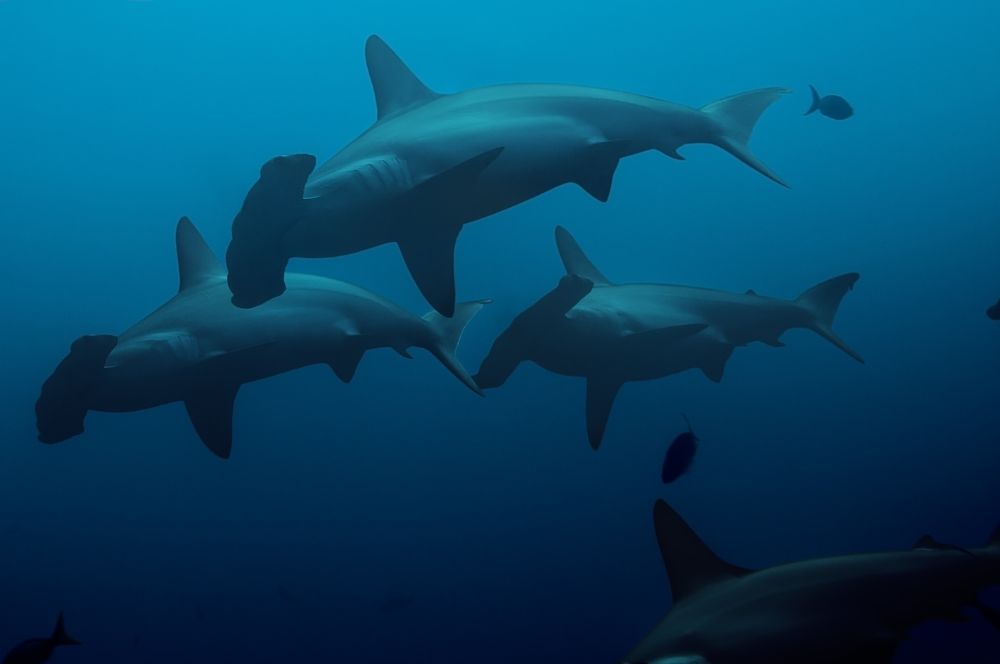
The hammerhead shark is well-known for its distinctive head shape which gives it excellent vision underwater. Hammerhead sharks are found in tropical oceans around the world where they hunt for small fish and squid using their sensitive electroreceptors located along their heads.
Finally, we have the Greenland shark which is one of the largest living species, living between 250 and 500 years! These slow-moving predators inhabit cold waters near Greenland where they feed on fish, seals, whales, and even polar bears!
These strange sharks offer us a glimpse into the mysterious depths of our oceans - from giant megalodons to glowing lantern sharks - each one has something unique to offer us about our planet's marine life!
To conclude, while sharks may appear menacing and mysterious, it is important to remember their true nature: they are intelligent creatures that have managed to stay at the top of the food chain for millions of years. Sharks are essential components of ocean ecosystems and any disruptions in their populations could spell disaster for marine life. Furthermore, there is still a great deal to learn about sharks as they come in a variety of species and sizes that could provide research opportunities for marine biologists and conservationists alike. To those that fear or misunderstand sharks, it is important to remember that these creatures aren’t out for blood - their main goal is just to survive. All of us should aim towards treating these beautiful beings with respect and aiding in their protection so future generations can observe their fascinating behaviour firsthand.
SHARK DIVES YOU MAY LIKE
-
Magic Point
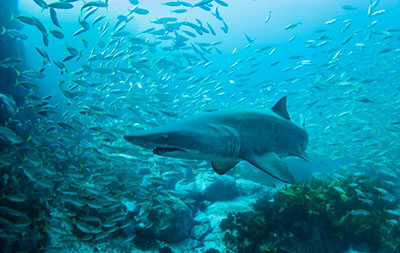
Magic Point
Sydney's leading shark dive location with 4 species of shark, including grey nurse sharks, wobbegong sharks […] -
Nelson Bay
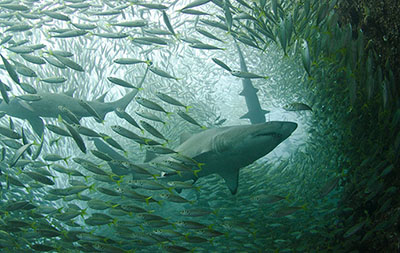
Nelson Bay
The most popular dive is the 'Looking Glass', a narrow channel through the centre of the island. […] -
Fish Rock Cave
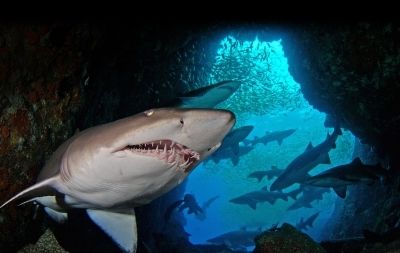
Fish Rock Cave
Famous for a large array of sharks ranging from grey nurse sharks to schools of hammer heads[…] -
Cage Diving

Cage Diving
They depart from and return to Port Lincoln, South Australia. The vessel has two cages; one cage is for the […]
Recent Posts

